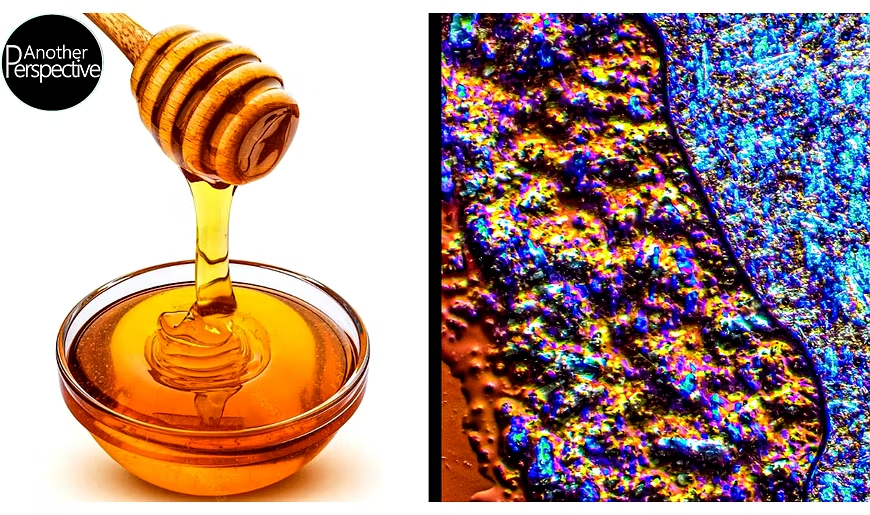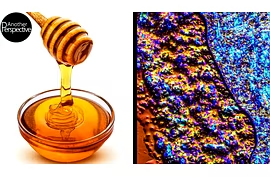Real Honey vs Fake Honey under a microscope.
Post by : Admin | 22 Jul 2024
In the world of natural sweeteners, honey holds a special place. Known for its rich flavor, numerous health benefits, and versatility, it’s a staple in many households. However, not all honey is created equal. The market is flooded with adulterated or fake honey, which poses a challenge for consumers who seek authenticity. In this article, we will explore the differences between real honey and fake honey under a microscope, shedding light on what makes genuine honey truly unique.
The Rise of Fake Honey
The demand for honey has surged globally, and so has the temptation to produce counterfeit versions. Fake honey often contains additives like sugar syrup, corn syrup, or even synthetic substances that mimic the taste and texture of real honey. These imposters not only dilute the nutritional value of honey but also deceive consumers into paying a premium for a subpar product.
Microscopic Examination of Honey
To understand the distinction between real and fake honey, let’s delve into their microscopic characteristics:
-
Pollen Grains: Genuine honey contains pollen grains from the flowers visited by bees. These pollen grains are unique to specific plants and can be identified under a microscope. Real honey exhibits a diverse array of pollen, reflecting the flora of the region where the bees forage. Fake honey, on the other hand, often lacks these pollen grains or contains only a few, indicating adulteration.
-
Crystalline Structure: Real honey tends to crystallize over time due to the presence of natural sugars like glucose and fructose. Under a microscope, this crystallization appears as a network of small, consistent crystals. Fake honey might either not crystallize at all or show irregular, large crystals, suggesting the addition of external sugars.
-
Enzyme Activity: Bees produce specific enzymes like invertase, diastase, and glucose oxidase during the honey-making process. These enzymes can be detected under a microscope through various biochemical tests. Authentic honey shows active enzyme presence, while fake honey often lacks these enzymes, as they are not replicated in synthetic or adulterated products.
-
Color and Texture: When viewed under a microscope, real honey reveals a complex, viscous texture with uniform color distribution. Fake honey might show uneven coloration and a less viscous, more watery texture, indicating the presence of added syrups or water.
The Impact of Adulteration
Consuming fake honey not only deprives individuals of honey’s natural benefits but can also have adverse health effects. Additives used in counterfeit honey, such as high-fructose corn syrup, can contribute to health issues like obesity and diabetes. Moreover, the absence of beneficial enzymes and pollen in fake honey means missing out on the therapeutic properties of real honey, such as its antimicrobial and antioxidant effects.
Ensuring Authenticity
To ensure you’re getting real honey, consider the following tips:
-
Source from Trusted Producers: Buy honey from reputable sources known for their quality and authenticity. Look for certifications and lab test reports that guarantee purity.
-
Check Labels: Read product labels carefully. Genuine honey should list its origin and ingredients clearly without vague terms.
-
Conduct Simple Tests: At home, you can perform basic tests like the water test (real honey doesn’t dissolve easily in water) or the thumb test (real honey stays intact when dabbed on your thumb).
Conclusion
The microscopic examination of honey reveals the intricate details that distinguish real honey from its fake counterparts. Understanding these differences can help consumers make informed choices and appreciate the genuine article’s true value. As you savor the sweet, golden nectar, remember that real honey is a product of nature’s artistry, painstakingly crafted by bees and enriched by the flora they visit. Choose authenticity, and enjoy the myriad benefits that only true honey can offer.
